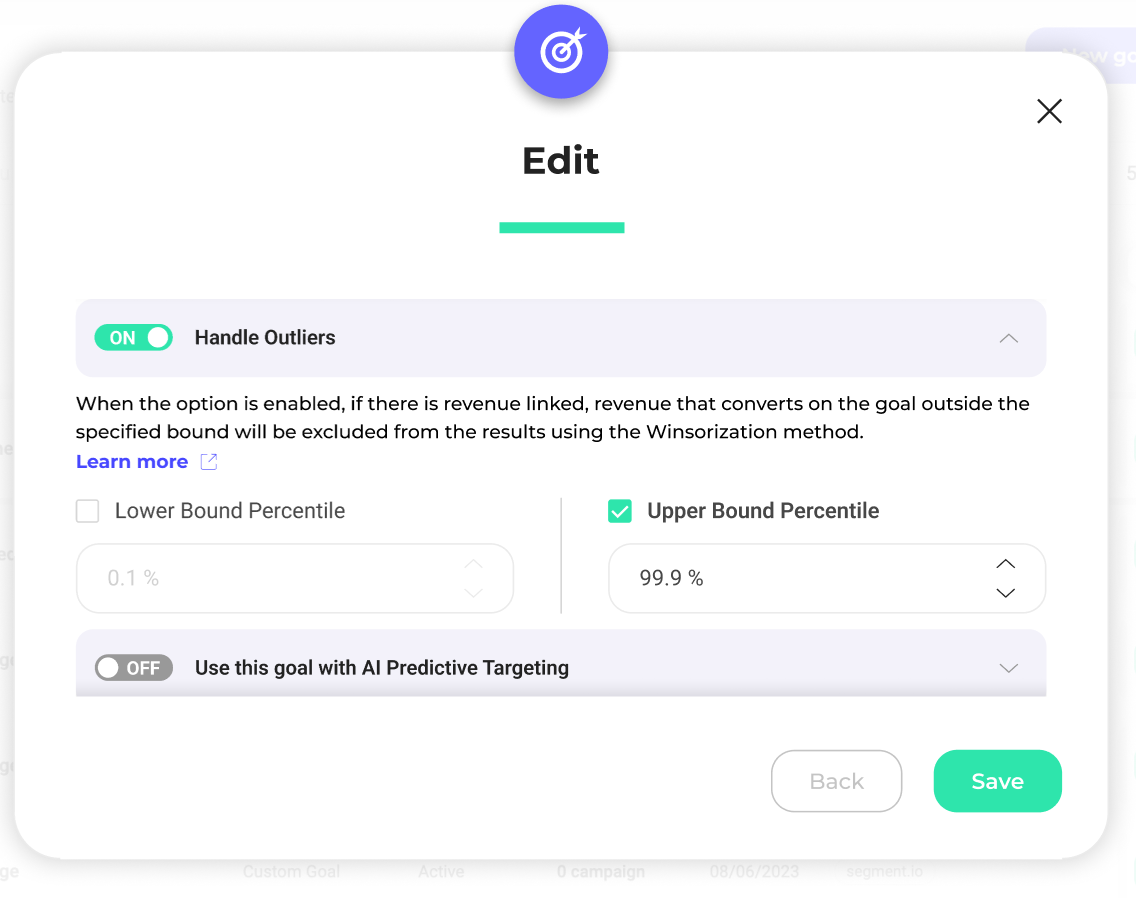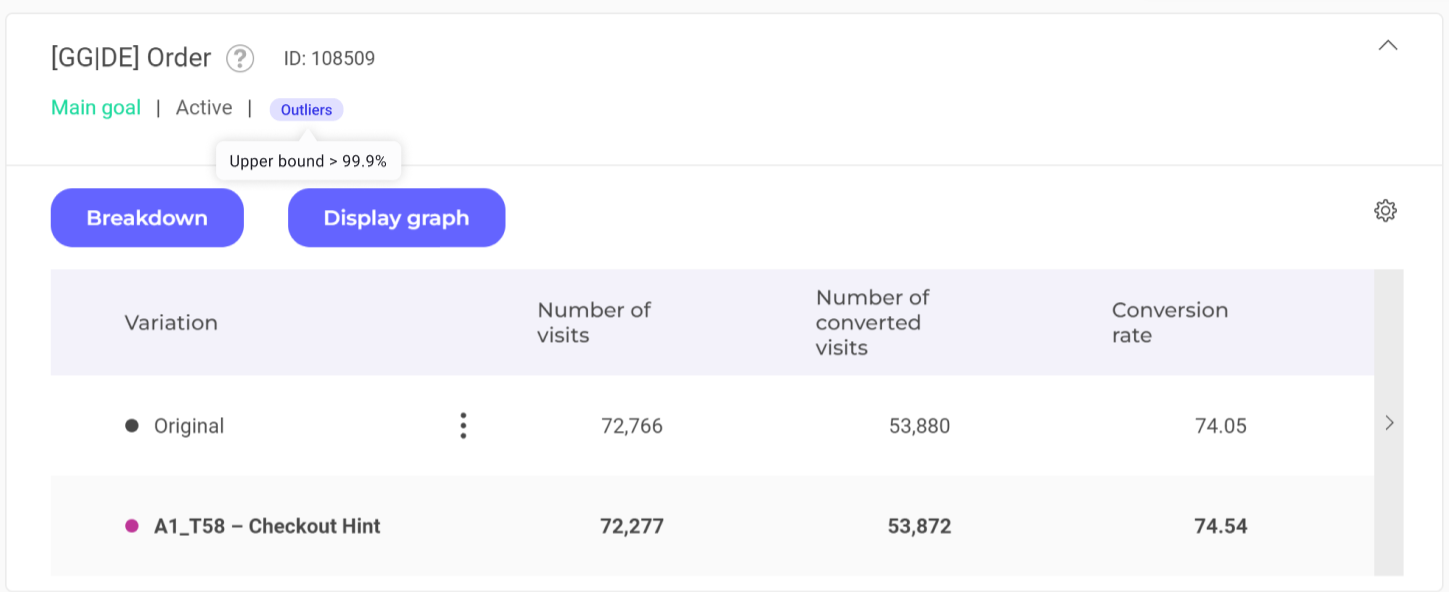Winsorization
What is Winsorization?
Winsorization is a statistical technique used to limit extreme values in data to reduce the impact of outliers by using percentiles of your data. Outliers are data points that significantly differ from other observations and can skew the results of your A/B tests. By Winsorizing your data, you can ensure that your results are more robust and reliable.
Why Winsorization Matters in A/B Testing
In A/B testing, we compare two or more variations to determine which performs better. Outliers can distort the true performance of these variations, leading to misleading conclusions. By applying Winsorization, we mitigate the effect of these extreme values, providing you with more accurate and actionable insights.
Winsorization is particularly useful when:
- Your data contains extreme values that are not errors but are still significantly different from other observations.
- You are looking for a simple and effective method to handle outliers without resorting to more complex techniques.
- You need to maintain a balance between data integrity and managing outliers effectively.
Risks and good practices with Winsorization
While Winsorization is a valuable tool, it is not without its risks:
- Loss of data integrity: Excessive Winsorization can lead to a significant alteration of your data, potentially masking important variations and patterns.
- Over-simplification: By modifying outliers, you may oversimplify your data, which can result in an incomplete understanding of your dataset.
- Bias introduction: Inappropriate Winsorization thresholds can introduce bias, skewing your results and leading to incorrect conclusions. If you do not ensure symmetry around the mean (5th and 95th percentile), you might alter the mean.
To mitigate these risks, follow these best practices:
- Understand your data: Before applying Winsorization, thoroughly understand the nature and distribution of your data. Understanding your data helps you set appropriate thresholds for identifying outliers.
- Set appropriate thresholds: Use industry standards or data-specific insights to set your Winsorization thresholds. Common thresholds include the top and bottom 0.1% up to 5% of your data, but these should be adjusted based on your specific use case.
- Evaluate impact: After applying Winsorization, evaluate its impact on your data and test results. Compare the Winsorized data with the original to ensure that important information is not lost.
- Document your process: Keep a detailed record of your Winsorization process, including the rationale for chosen thresholds and the impact on your data. This transparency aids in reproducibility and understanding.
How to implement Winsorization in Kameleoon
1. Create a custom goal
First, you need to create a custom goal to which you want to apply Winsorization.
2. Set limits
Next, you need to set limits to replace the outliers. For example, if you're using 95% Winsorization, any data points below the 2.5th percentile are set to the value at the 2.5th percentile, and any data points above the 97.5th percentile are set to the value at the 97.5th percentile.
These bounds can be found in the Advanced Settings of your custom goal. The Winsorization method will be applied to your Revenue if it exists.

Kameleoon will apply the Winsorization method to your custom goal and identify the outliers in your data.
3. Read your results
Once Winsorization is applied to your goal, you can read your adjusted results in the different results pages containing this goal. The goal container will then have a badge telling you that outliers are handled on this goal. Hovering on the badge will display the parameters you have set.

Example of impact
Consider an A/B test comparing two landing pages (A and B). Without Winsorization, a few high-value outliers (for example, purchases made by a few very high-spending users) could make one page appear significantly more effective, even if the typical user behavior does not support this conclusion.
- Original data (Metric: Revenue per user):
- Page A: [10, 12, 14, 15, 16, 18, 100]
- Page B: [11, 13, 15, 15, 17, 19, 110]
- Winsorized data:
- Page A: [10, 12, 14, 15, 16, 18, 18]
- Page B: [11, 13, 15, 15, 17, 19, 19]
In this example, the extreme values (100 and 110) are capped, providing a more accurate comparison of typical user revenue between the two pages.
Technical considerations
- When you first apply this method to your custom goal, we will compute and store the values corresponding to the percentiles you have set and use it in results pages to adapt your data.
- The percentile values used for clipping the outliers are updated once a day at 2:00 a.m. Note that these values will be re-evaluated instantly if you change the thresholds in the goal settings.
- Note that the raw data is not changed. You can still find your raw data when requesting a raw export.